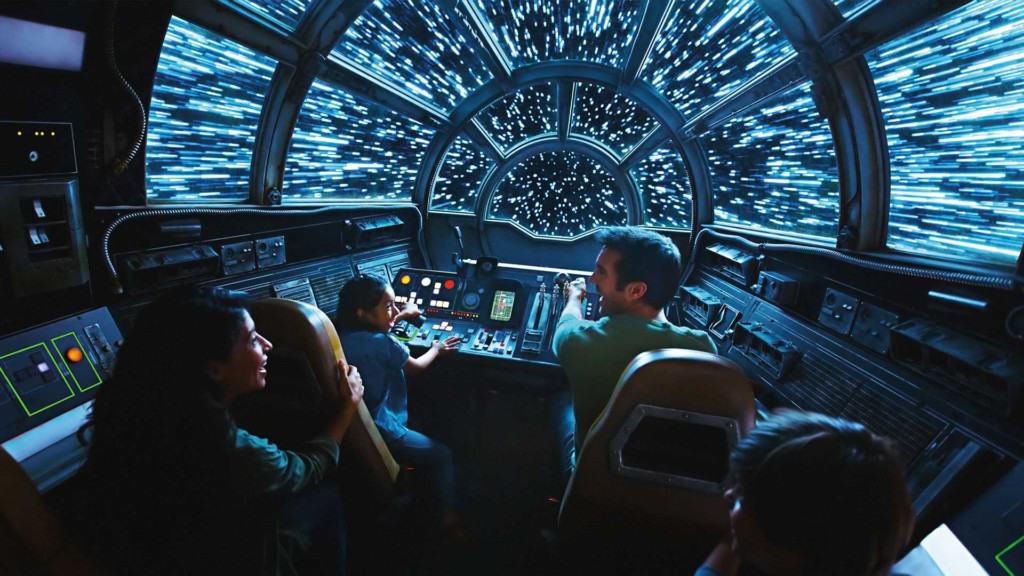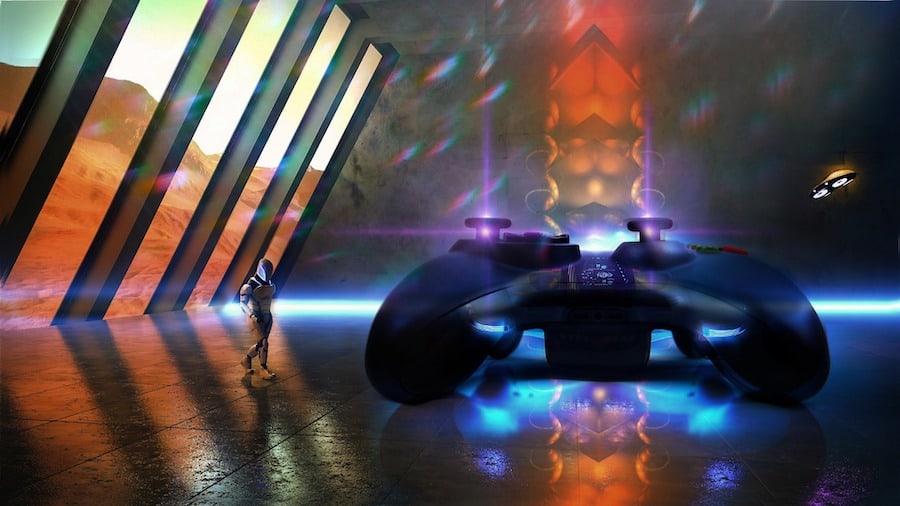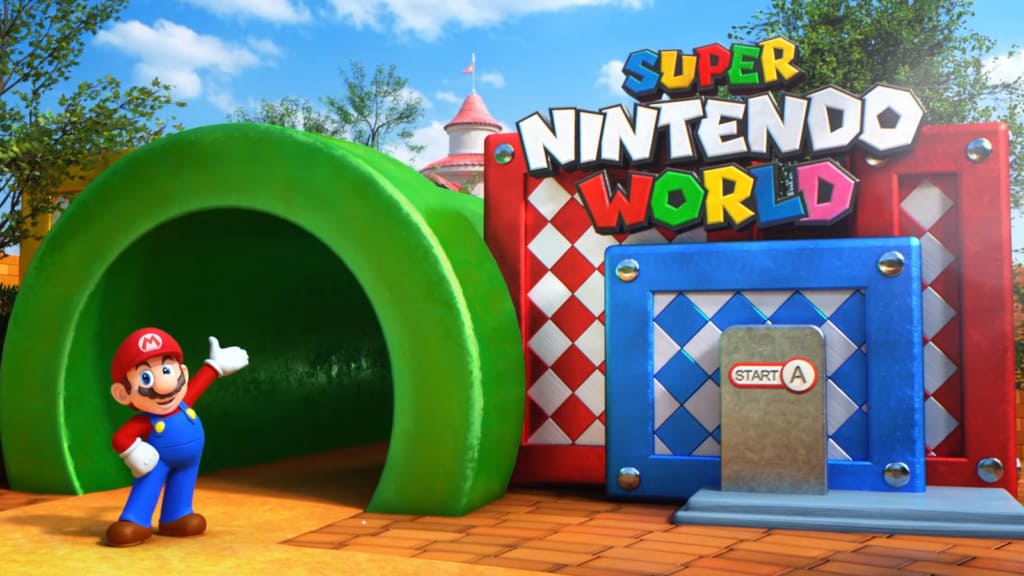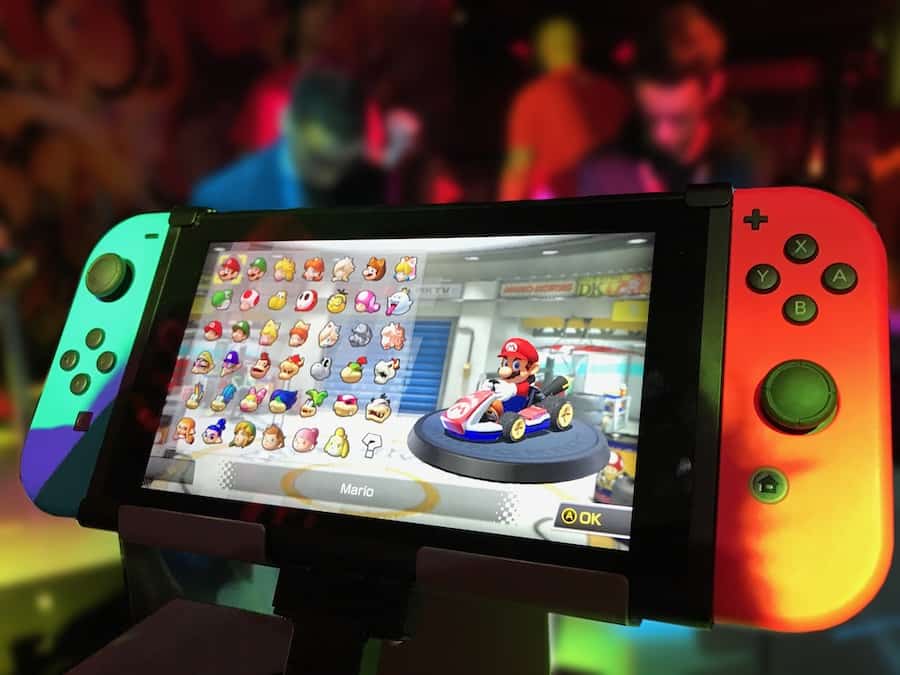Deep Story is coming and it has the potential to transform the location-based entertainment industry. Not just in how we tell stories, but also in how we fundamentally do business.
By Tim Madison, Raven Sun Creative
I’ve written in the past about how LBE is going to be transformed by the evolution of home entertainment. This, by itself, isn’t a particularly earth-shattering claim.
The popularity of gamification in LBE settings is evidence of videogaming’s huge cultural influence. In-home immersive technology and media will continue to change how audiences consume media and interact with the larger world. The continued digitalization of our world will change some of our most basic notions of what “place” means.
When audiences can experience more immersive, compelling, interactive, personalized, shareable, and social experiences from the comfort of their own living rooms, it means destinations will be forced to evolve to compete.
While this may sound ominous to real-world destinations, it doesn’t need to be. In fact, for destinations that can lean into the change, it will be a real positive. The blurring of boundaries between online and offline reality presents major opportunities for destinations and the LBE industry to redefine themselves and create new, more sustainable business models.
Deep Story is just one way for destinations to reinvent themselves for the virtual age.
What is Deep Story?
The term ‘Deep Story’ may be new. But the core idea is something many creatives have been dreaming of for a long time. Essentially, Deep Story is a multiplatform role-playing experience that bridges destination and home entertainment.
Deep Story represents the ultimate convergent immersive storytelling. It brings location-based entertainment together with the complex, multi-branching narratives and ongoing immersion of roleplaying videogames. Particularly the kind of open-world gaming seen in titles like Red Dead Redemption 2, Assassin’s Creed Odyssey, and Witcher 3: Wild Hunt.
Participants become part of a story world that spans virtual and physical realms – home and mobile gaming, and real-world destinations.

Imagine a Star Wars or Harry Potter RPG videogame at home where you could develop a character that would carry over and deepen your interaction when visiting Galaxy’s Edge or the Wizarding World.
Or how about a virtual museum experience where you could take on missions through time, saving priceless artefacts from the Great Fire of London, defending a merchant caravan on the ancient Silk Road, or fighting to survive and prosper in the Paleolithic Age.
Think about visiting the zoo or aquarium and gaining the ability to become your favourite animal in their natural habitat. Be it a chimpanzee in Tanzania, leopard shark on the Great Barrier Reef, a jaguar in the Amazon rainforests, or even an ant in your backyard.
The levelling up of immersive storytelling
Using words like “gaming” and “roleplaying” to describe Deep Story may lead some to believe it is a niche form of entertainment. Or that it is outside the scope of most organizations’ missions. Some might say that they aren’t in the gaming business.
But when we say “gaming”, what we’re really talking about is participatory storytelling. A form of entertainment that is on its way to becoming the main form of media in the future. We cannot ignore its rise.
Videogames are arguably already more varied in form than film and television and they are still rapidly evolving. It is an incredibly adaptable medium with fast-expanding boundaries. We need to think of gaming as a mode of interactive storytelling that any organization can use to tell their story.
The possibilities for Deep Story are endless. Not just in terms of the types of interactive content it can deliver, but also in terms of purpose, configuration, monetization, and scale. Its potential for theme parks and FECs and big IPs might be immediately apparent. But it is a form of storytelling that could just as easily be used by museums, cultural heritage sites, zoos, aquariums, and more.
Attributes of Deep Story
What Deep Story looks like will depend upon the goals and identity of the destination and creative partners creating and implementing it. However, we can make some basic assumptions about the attributes of an ideal model of Deep Story:
Unified cross-platform immersion
The story world exists across home entertainment platforms, mobile gaming, and interactive destination experiences. It provides seamless continuity of play, as well as the ability to choose how and through what medium to participate.
For instance, if a participant developed a character at home, that character could be brought meaningfully into destination interactions. Likewise, if a guest completed a mission at the destination, that would be reflected throughout the platforms.
Each platform experience can be enjoyed in isolation
For Deep Story to work, every format experience needs to feel complete and to justify its independent existence from the larger narrative ecosystem. These aren’t marketing tie-ins or supplementary material. Each needs to provide unique content, without requiring a participant to go to another platform to feel satisfied.
Meaningful expansion into virtual spaces
A premium tell-your-friends brand experience does not require in-person visitation to the physical location. Destinations must also expand their brand presence meaningfully into virtual spaces, offering digital experiences that can compete with other streaming content. A participant never hits a frustrating story wall, forcing them to another medium.
Destinations must expand their brand presence meaningfully into virtual spaces
In-story incentives to experience other platforms
Deep Story leverages the specific strengths of each medium. It offers unique content, enriching the overall experience. Each platform offers types of experiences that overall mediums simply can’t provide.
Highly interactive
Participants possess a high degree of agency and a wide range of choice. They can also affect change and influence characters and events.
Rewarding roleplaying
A participant takes on the role of a customizable character. The character can grow and level up over the course of play. They can gain experience, skills, collectables, and even status and reputation.
Meticulous worldbuilding
Deep Story requires a complex, layered world with a character that feels lived in and worthy of exploration. The settings, characters, objects, lore, events, and experiences within the world are rich, varied, and filled with potential.
 Engaging narratives/play scenarios
Engaging narratives/play scenarios
The freedom to roam an open world loses its novelty if there is nothing of substance going on. With Deep Story, the story world has interactive narratives, large and small. Deep Story isn’t about overloading the experience with a conventional plot or forcing participants through three-act structures.
In fact, games like Fortnite, Minecraft, Stardew Valley, and Animal Crossing succeed because they provide scenarios where players can live their own stories. Participants need engaging missions, quests, goals, decisions to make, problems to solve, challenges to overcome, and achievements to unlock.
Solid medium-appropriate play mechanics
Playability – the ease with which participants of varying skill levels can engage in a rewarding play experience – is one of the most critical aspects of Deep Story. Play mechanics and logistics of interactivity must be tailored to the different needs, limitations, and strengths of digital and physical mediums.
Evolving Content
The story world of Deep Story needs to live, breathe, and evolve. The most successful examples will likely be ones that listen closely to their audience, embracing them as guides and co-creators.
The story world of Deep Story needs to live, breathe, and evolve
Smart monetization strategies
Monetizing Deep Story platform experiences will likely involve some combination of pricing models. For instance, one-time product/experience purchase, pay-as-you-go, subscription, tiered, freemium, in-game consumables, and so on. A Deep Story experience needs to start with some accessible price points and purchasing options.
What’s driving the emergence of Deep Story?
The current paths of digital technology, gaming, streaming culture, and destinations are all heading toward convergence.
Gaming is already mainstream. But all signs point toward even more broad adoption, perhaps even making it the dominant form of entertainment media in the 21st century. The huge impact of videogames – their ability to offer deep immersion, interactivity, and personal agency for its audience – is changing the ways we engage with narrative media.
Deep Story is the next step in participatory entertainment for a world steeped in streaming content, interactive media, personalization and increasingly sophisticated gaming narratives and digital worlds.
Factors driving the emergence of Deep Story
- The massive growth of the global gaming market. This is predicted to reach $159 billion in consumer revenue in 2019, according to the 2020 Global Games Market Report from the games analytics firm Newzoo.
- The growing influence of gamer generations. Gaming plays a central role in the lives of Millennials and Gen Z. They are accustomed to narratively dense roleplaying titles like Skyrim and Red Dead Redemption 2. These are also audiences that are more likely to consume videogames over traditional media.
- The current cultural dominance of transmedia storytelling. The biggest intellectual properties in the world, for instance, Star Wars, Marvel and Harry Potter have connected story worlds. These span media platforms, including destination experiences. From the world of games, titles like Minecraft, World of Warcraft, and Overwatch, have also made important inroads into transmedia storytelling.
- The rise of the Metaverse. The Metaverse is seen by many tech giants to be the inevitable near-future successor of the Internet. A common virtual universe where the virtually-enhanced real world meets a new persistent digital infrastructure, it will likely be a world-changing development. There’s plenty of uncertainty shrouding the specifics of what the Metaverse will look like. However, many brands and organizations are already leading the charge to this new digital frontier.
- The global health pandemic. COVID-19 has greatly accelerated the growth of home entertainment and digital life. It has also made it clear that destinations need new solutions for times of disruption when in-person visitation becomes difficult.

The forerunners of Deep Story
One way to understand what Deep Story is (and is not) is to look at its current closest forerunners.
Star Wars: Galaxy’s Edge
Star Wars: Galaxy’s Edge is not Deep Story. Not yet, anyway. But Disney certainly seems to be moving in that direction with the project. It remains to be seen whether the company has its eyes on turning it into a fully integrated cross-platform interactive narrative. Whether it does or not, Galaxy’s Edge is an important indicator of where the future is headed.
It’s worth mentioning that Disney still seems to be finding its way with Galaxy’s Edge. Opinion has been varied on how successfully the project manages to deliver on all its many grand ambitions. Nevertheless, Galaxy’s Edge stands at the vanguard of an immersive entertainment revolution.

Galaxy’s Edge combines destination deep storytelling, including in-story retail and F&B, with mobile gaming and storytelling in Star Wars: Datapad on the Play Disney Parks Mobile app. The Millennium Falcon: Smugglers Run attraction pushes big-league simulator attractions further toward gaming with an emphasis on interactivity and a variable outcome.
An immersive Star Wars experience
In a nod to RPG videogames where you can build a reputation, your success or failure in carrying out your mission can end up influencing future character interactions throughout the land. Throughout destination experience, there is more of an emphasis on “organic” character interaction. Although maybe not as much as some LARPing Star Wars fans had hoped.
The Star Wars: Galactic Starcruiser hotel promises a more deeply immersive interactive theatre experience along the lines of Sleep No More crossed with a two-night themed cruise.
Add to that the recently announced Star Wars: Tales from Galaxy’s Edge, a VR experience which Disney is developing with ILMxLAB and Oculus Studios, and the company will have many of the components of a Deep Story experience.
What Galaxy’s Edge lacks is the deeper playable narrative, linking those pieces together. It’s transmedia, but not Deep Story. The Datapad app, while innovative, is essentially what fans of RPG videogames would regard as a series of simple “fetch quests” without a larger progressive purpose.
Both the Smugglers Run and Rise of the Resistance attractions, even with interactive elements and SR’s variable outcomes, tell largely static, closed stories within traditional narrative bubbles.
Universal’s Super Nintendo World
Will Universal end up bridging the gap between destination and home before Disney does?
Universal’s upcoming Super Nintendo World will feature interactive gameplay throughout the environments in Japan and Florida. Guests will be able to purchase wristbands, called Power Up Bands, to interact with the land.

The Power Up Band can be linked to a mobile app allowing guests to track their scores, collectables, and other game stats. With this wearable tech, guests will be able to participate in mini-games, collect rewards, and compete against others. They will also be able to unlock a multiplayer mode. This will enable cooperative gameplay and further challenges, like Boss battles with virtual enemies.
Furthermore, Universal has said that guests with the Power Up Band will be able to send their gameplay data to Switch Consoles at home. Exactly how Universal and Nintendo plan on extending the gameplay to the home is unclear. But once that threshold is crossed, it will open the door to a whole new world of possibilities.
Why Deep Story matters for destinations?
The short answer to this question is value creation.
Deep Story is an opportunity to create new value for visitors (whether they’re visiting physical or virtual spaces), destinations, brands, and business and creative partners.
Audiences will always be hungry for deeper, more lifelike immersion. The merging of virtual space and real destination through a unified story experience is one way to deliver that. Each world offers different dimensions to the immersion.
Deep Story is an opportunity to create new value for visitors (whether they’re visiting physical or virtual spaces), destinations, brands, and business and creative partners.
We are moving into an age where even regional destinations will find they need to build more robust virtual presences. Deep Story is not the only solution to that issue. But it will be an elastic one, offering an enormous amount of latitude for destinations to expand their brands.
In an ever-expanding virtual world, destinations need not be limited to their physical spaces, geographic boundaries, or in-person visitation. They can also reach global audiences, develop new business models, and tap into new revenue streams. Destinations can tell the story of their brand on multiple platforms.
Guests can forge deeper, more intimate, and more personal connections with a destination anytime they want. From the comfort of their home.
How can we make Deep Story work?

Deep Story might sound too ambitious and expensive for many smaller organizations, or simply outside their mission.
Players like Disney and Universal have deep pockets, global transmedia presence, and mountains of resources and IP content. How can destinations of more modest means (i.e. everybody else) hope to launch a Deep Story project?
Destinations will need to look beyond their own walls in more than just a virtual sense.
Deep Story will also require collaboration with multiple players to bring it to market. Destinations need access to tools, services, platforms, and talent networks. That means developing new relationships with other business partners, brands, and industries. Forming collaborative ecosystems and co-branding partnerships will enable all players to achieve more.
Traditionally, we think of outside IP coming to destinations as a means to attract guests. Destinations, with few exceptions, don’t colonize other media. There’s no reason that this can’t change.
Now, digital technology is bringing us to a place where the destination brands – be it a theme park, museum, zoo, historic attraction – have deep storytelling and content value to provide other media. Destinations can use their history, social and cultural capital, experiences, collections, sense of place, all those assets that make them stand out. A whole new brand space and realm of expression is ready for those who do.
The story of things to come
There are many things about the future we can’t see. But the continued virtualization of human experience is a safe bet. As a result, many of the compartments that divided media, destinations, and other aspects of our lives are melting away.
Deep Story, together with things like virtual tourism, will offer opportunities for location-based brands to transcend location
Deep Story, together with things like virtual tourism, will offer opportunities for location-based brands to transcend location. Destinations and attractions can free themselves from the confines of geography and reach new audiences around the world. The pieces of Deep Story are falling into place. It’s time for LBE to write its next chapter.

















